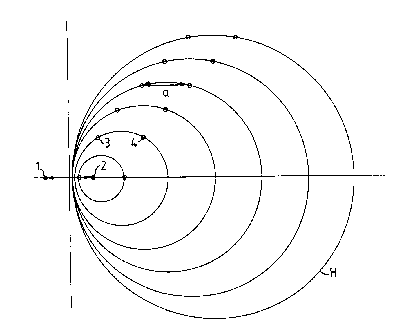Some of the information on this Web page has been provided by external sources. The Government of Canada is not responsible for the accuracy, reliability or currency of the information supplied by external sources. Users wishing to rely upon this information should consult directly with the source of the information. Content provided by external sources is not subject to official languages, privacy and accessibility requirements.
Any discrepancies in the text and image of the Claims and Abstract are due to differing posting times. Text of the Claims and Abstract are posted:
| (12) Patent: | (11) CA 2222635 |
|---|---|
| (54) English Title: | ARRANGEMENT OF CONTACT PAIRS OF TWIN CONDUCTORS AND OF CONDUCTORS OF A MULTI-CORE CABLE FOR THE PURPOSE OF REDUCING CROSSTALK |
| (54) French Title: | MONTAGE DE PAIRES DE CONTACTS DE CONDUCTEURS JUMELES ET DE CONDUCTEURS D'UN CABLE A AMES MULTIPLES, VISANT A REDUIRE LA DIAPHONIE |
| Status: | Expired and beyond the Period of Reversal |
| (51) International Patent Classification (IPC): |
|
|---|---|
| (72) Inventors : |
|
| (73) Owners : |
|
| (71) Applicants : |
|
| (74) Agent: | G. RONALD BELL & ASSOCIATES |
| (74) Associate agent: | |
| (45) Issued: | 2002-08-20 |
| (22) Filed Date: | 1997-11-27 |
| (41) Open to Public Inspection: | 1998-06-10 |
| Examination requested: | 2000-02-15 |
| Availability of licence: | N/A |
| Dedicated to the Public: | N/A |
| (25) Language of filing: | English |
| Patent Cooperation Treaty (PCT): | No |
|---|
| (30) Application Priority Data: | ||||||
|---|---|---|---|---|---|---|
|
An arrangement of contact pairs of twin conductors and
of conductors of a multi-core cable for the purpose of reducing
crosstalk, in which the contact pairs of the twin conductors or
the conductor pairs define mutually parallel, non-congruent
areas F1,2; F3,4; F5,6; F7,8, and the twin conductors or, conductor
pairs are arranged on electric equipotential lines of their
neighbouring twin conductors.
Note: Claims are shown in the official language in which they were submitted.
Note: Descriptions are shown in the official language in which they were submitted.

2024-08-01:As part of the Next Generation Patents (NGP) transition, the Canadian Patents Database (CPD) now contains a more detailed Event History, which replicates the Event Log of our new back-office solution.
Please note that "Inactive:" events refers to events no longer in use in our new back-office solution.
For a clearer understanding of the status of the application/patent presented on this page, the site Disclaimer , as well as the definitions for Patent , Event History , Maintenance Fee and Payment History should be consulted.
| Description | Date |
|---|---|
| Time Limit for Reversal Expired | 2011-11-28 |
| Letter Sent | 2010-11-29 |
| Letter Sent | 2010-03-22 |
| Inactive: IPC from MCD | 2006-03-12 |
| Inactive: Reversal of will be deemed expired status | 2006-02-17 |
| Letter Sent | 2005-11-28 |
| Grant by Issuance | 2002-08-20 |
| Inactive: Cover page published | 2002-08-19 |
| Pre-grant | 2002-05-31 |
| Inactive: Final fee received | 2002-05-31 |
| Notice of Allowance is Issued | 2001-12-05 |
| Letter Sent | 2001-12-05 |
| Notice of Allowance is Issued | 2001-12-05 |
| Inactive: Approved for allowance (AFA) | 2001-11-22 |
| Letter Sent | 2000-06-13 |
| Inactive: Multiple transfers | 2000-05-16 |
| Amendment Received - Voluntary Amendment | 2000-05-10 |
| Amendment Received - Voluntary Amendment | 2000-03-07 |
| Letter Sent | 2000-02-29 |
| Request for Examination Requirements Determined Compliant | 2000-02-15 |
| All Requirements for Examination Determined Compliant | 2000-02-15 |
| Request for Examination Received | 2000-02-15 |
| Application Published (Open to Public Inspection) | 1998-06-10 |
| Inactive: First IPC assigned | 1998-03-12 |
| Classification Modified | 1998-03-12 |
| Inactive: IPC assigned | 1998-03-12 |
| Inactive: IPC assigned | 1998-03-12 |
| Inactive: IPC assigned | 1998-03-12 |
| Inactive: Filing certificate - No RFE (English) | 1998-02-23 |
| Filing Requirements Determined Compliant | 1998-02-23 |
| Letter Sent | 1998-02-23 |
| Application Received - Regular National | 1998-02-20 |
There is no abandonment history.
The last payment was received on 2001-11-19
Note : If the full payment has not been received on or before the date indicated, a further fee may be required which may be one of the following
Please refer to the CIPO Patent Fees web page to see all current fee amounts.
| Fee Type | Anniversary Year | Due Date | Paid Date |
|---|---|---|---|
| Registration of a document | 1997-11-27 | ||
| Application fee - standard | 1997-11-27 | ||
| MF (application, 2nd anniv.) - standard | 02 | 1999-11-29 | 1999-11-18 |
| Request for examination - standard | 2000-02-15 | ||
| Registration of a document | 2000-05-16 | ||
| MF (application, 3rd anniv.) - standard | 03 | 2000-11-27 | 2000-11-17 |
| MF (application, 4th anniv.) - standard | 04 | 2001-11-27 | 2001-11-19 |
| Final fee - standard | 2002-05-31 | ||
| MF (patent, 5th anniv.) - standard | 2002-11-27 | 2002-11-20 | |
| MF (patent, 6th anniv.) - standard | 2003-11-27 | 2003-11-04 | |
| MF (patent, 7th anniv.) - standard | 2004-11-29 | 2004-11-12 | |
| MF (patent, 8th anniv.) - standard | 2005-11-28 | 2005-11-08 | |
| MF (patent, 9th anniv.) - standard | 2006-11-27 | 2006-11-06 | |
| MF (patent, 10th anniv.) - standard | 2007-11-27 | 2007-11-15 | |
| MF (patent, 11th anniv.) - standard | 2008-11-27 | 2008-11-13 | |
| MF (patent, 12th anniv.) - standard | 2009-11-27 | 2009-11-18 |
Note: Records showing the ownership history in alphabetical order.
| Current Owners on Record |
|---|
| KRONE GMBH |
| Past Owners on Record |
|---|
| MICHAEL GWIAZDOWSKI |